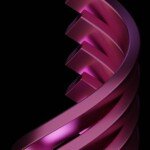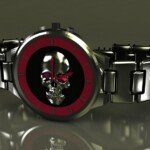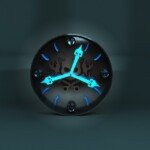Conquer the Fourth Wingsago: Mastering the Epic Fantasy Creation of Metal 3D Printing
So you decided to deal with one of the most eye-catching and complex designs in the realm of 3D printable dragons: the Fourth Winged Saw. With its grand outline, intricate scales, terrifying details, and four wings of those signatures, it’s a real test piece for any enthusiast or professional printer. But when ambition demands Metal – Designed to build lasting, heirloom, fantastic masterpieces – Challenge levels soar. Metal 3D printing, especially for such complex geometries, requires specific knowledge and meticulous execution.
Fear not to! Whether you’re an experienced metalsmith in a digital foundry or aboard your first serious metal print, these tips will help you navigate the fire of complexity and win, grab your own metal giant.
(Image suggestion: stunningly detailed, finished 4th Winghound, printed with metals like titanium or stainless steel, showing its intricate texture and glory of four wings.)
Crucible of Complexity: Pretreatment
-
Model mastery is not negotiable:
- Watertight and manifold: Make sure your fourth pterosaur model is perfectly sealed – no holes, non-manifold edges or intersecting mesh. Metal powders can even ruthlessly utilize even the finest gaps, resulting in printing failures or internal defects. Use dedicated mesh repair tools or programs such as Meshmixer, Netfabb or strictly implement Magics in slicing software.
- Thickness of wall wisdom: Unlike plastics, metal printing requires a minimum wall thickness to succeed. The parts below this threshold are dangerous or distorted. It is crucial that when designing or selecting a model, make sure that all key features (especially the wing veins, horns, claws, tails) meet or exceed Minimum printable thickness Metal process and alloy licensed by your choice (usually 0.3mm -0.5mm for fine features in SLM/DML, probably higher, and possibly higher for adhesive spray peeling). If necessary, analyze the model and make the critical areas thicker.
- Support: Your Unsung Hero (and Toxic Waste): Support policies definition Success of overhanging such as wings, open jaws and abdominal details. Automatic training is usually insufficient. Manual support programs are crucial:
- Use lattice support under large overhangs (such as wings) for stability.
- Use conical or tree-like support to get the tip (trumpet, claw, wing) to minimize contact points but provide a safe anchor.
- Strategic support based on thermal stress analysis.
- remember: Metal support is not just a snap-up – they are Processing or Deleted EDMleaving behind witness marks that require significant post-processing. Position them on less critical surfaces!
-
Direction: Not only does it look good:
- Reduce thermal stress: Direction of the dragon minimizes large overhangs directly facing the heat source. This reduces thermal distortion and curl. Maybe consider tilting it back slightly.
- Build height efficiency: While minimizing Z height may speed up prints, the thermal impact of direction is often more important for the success of complex constructions.
- Post-processing access: in advance! Oriental key surfaces (such as the dragon’s face and body) so support removal and decorative grinding/polishing can be effectively performed.
- Alloy Alchemy: Choose the Dragon’s Scale:
- Strength and Details: Material Stainless steel (316L, 17-4 pH) Provides excellent strength, corrosion resistance and considerable resolution of detail. They are popular choices for complex models.
- Lightweight Possibility: Titanium (Ti6al4v) Significantly lighter, incredibly powerful, but print (highly responsive) and more expensive and more challenging. Very suitable for display works that are important in weight.
- Exotic choice: MARAGG steel provides excellent post-strength heating treatment; ALSI10mg provides good thermal performance and light weight, but with slightly less details than SS or Ti. Bronze or copper alloys can be incredible, but face their own unique printing challenges.
In Forging: Optimizing Metal Printing
-
Parameter accuracy (professional level):
- Power and speed: This exquisite dance is crucial. Too much heat can lead to warpage and potential thermal cracking; too little can lead to incomplete melting (ball, porosity). The preset is the starting point. Fine-tuning usually requires complex simulation software observed during processing, which is key to the thin function of the dragon.
- Layer thickness: Thinner layers (e.g. 20-30 microns) capture finer details (scale, facial features), but greatly increases build time. For SLM/DML, balancing layer thickness and laser parameters are crucial. Thicker layers may be enough to accommodate larger parts, but lose the subtlety.
- Scan policy: Alternating scan vectors between layers help to distribute heat more evenly, thereby reducing residual stress and potential deformation – critical for complex organic shapes with uneven mass distribution.
- Stress relief intermediate construction?
- Some advanced machine and build planning software allow for pauses to program during long construction on site Pressure relief heat treatment. For large and complex fourth pterosaur prints, this can greatly reduce the risk of warping and rupture after printing. This is highly specialized, but it is worth considering the key build.
(Image recommendation: Close-up macro shots during printing using SLM/DMLS technology that appears layer by layer from molten metal powder.)
Out of the powder bed: post-processing and constraining
-
A faint exquisite art:
- The inner cavity of the dragon (even sealed inside the body or inside the wings) Will be Trap powder. It’s not only ugly – if the part needs to be processed or heat treated later, it’s a contaminant. Powerful vibration, compressed air (be careful!) and possible ultrasonic cleaning with a dedicated solution. Professionally set up with special equipment, such as shrinking stations.
-
Support for removal – surgical procedure:
- Gone are the days of rushing to buy support. Metal support needs to be passed Wire EDM (Electrical Emission Processing) Or be careful CNC machining. EDM is good at removing support, even in hard-to-reach areas without mechanical pressure. The risk of manual sawing or polishing can destroy delicate dragon features. It is strongly recommended to work with experts who specialize in this matter.
-
Heat treatment: taming internal stress:
- All metal 3D printed parts have inherent stress. Heat treatment (relieves pressure and usually heat is still – hips) Usually Basicespecially for complex parts and performance alloys such as titanium or horsepower steel. HIP eliminates internal porosity and greatly improves mechanical properties. Skipping this risk can delay distortion or premature part failure.
- Complete: Reveal the true glory of the beast:
- Surface preparation: Witness mark of supporters? Rough surface? Solve with them Abrasive blasting (glass beads, alumina) has a uniform matte effect.
- Chasing for perfection: For jewelry-like results or key surfaces:
- Precision machining/CNC completion: Replay the surface, such as a base, some scales or faces to give it an extremely high smoothness.
- Hand polishing: Needs tips, but if needed, an incredible sheen can be achieved in curves and details.
- electricity: Chemically remove micro peaks to make a smoother, brighter, and more corrosion-resistant surface. Excellent final touch.
- PATINA/Drawing: If you need color, explore the chemical patinas of steel/bronze or professional paint/paint.
(Image recommendation: Side by side comparison: Support plates are immediately after disassembling and support after polishing – show a dramatic conversion.
Conclusion: From Digital Dreams to Metal Reality – Power Partners
Printing complex 4th pterosaurs in metal is a beneficial pinnacle achievement. By carefully preparing models, respecting the harsh physics of metal powder bed fusion, planning sinister support removal and utilizing critical post-processing steps, you able victory. However, this is a process full of potential traps – laser power misestimation, under-support engineering, thermal warping, post-treatment damage – each of which can destroy time and precious materials.
Why take the risk of hoarding? This is exactly where to work with established metal 3D printing service providers Great Transform pressure into performance.
- Deep expertise: We don’t just run machines; we understand the complex interactions of materials science, thermodynamics, and fluid flow, as inherent in the Fourth Pterodactyl (such as the Fourth Pterodactyl).
- Senior Arsenal: Leverage state-of-the-art metal 3D printing equipment and complex process simulation and monitoring to prevent and mitigate thermal stress failures in advance.
- Project support: Design a strategic, manually optimized support structure using simulation tools to minimize printing failures and post-processing trauma.
- A true one-stop: Seamless integration from expert printing to critical steps: controlled reduction, precise EDM/cut support disassembly, basic hip and heat treatment, and overall finish selection – from standardized explosive textures to exhibition-level hand finishing and power waste.
- Material mastery: A guide to selecting the best alloys (SS, TI, AL, bronze, etc.) for your dragon purpose – whether it is displaying sculpture or functional art – leverage our profound understanding of material properties and printing nuances.
- Speed and reliability: Advanced technology and process optimization means faster turnaround time without sacrificing quality.
Weaving fantasy into lasting metal reality is our passion. Customize your own 4th Wingdoll masterpiece with Greatlight Metal 3D Printing now. Utilize our expertise to get outstanding results with leading value.
FAQ: Metal 3D Print Your Fourth Winged Sado
Q1: Can the Fourth Wingsago design be successfully printed in metal?
one: Absolutely! and Correct preparation and expertiseThe Fourth Pterodactyl is an amazing candidate for metal 3D printing. Strict model preparation (ensure waterline and minimum wall thickness), carefully designed support for metal removal, optimized printing parameters to manage thermal stress and expert post-treatment (especially supporting removal and heat treatment).
Q2: What is the biggest challenge in printing something like metal?
one: manage Thermal stress and support interactions It is the most important. The complex geometry of wings, horns and tails leads to uneven heating and cooling, resulting in warping or cracking without careful laser paths and directions. Secondly, design and Remove Metals support from delicate areas such as wing membranes and complex scales without damaging the model requires specialized techniques such as EDM and important skills. The radiance of the internal cavity is also extraordinary.
Q3: How thick does the wall/feature need to be on my digital dragon?
one: There is one Strict minimum function sizeusually from 0.3mm to 0.5mm For processes such as scale edges, wing veins or claw tips, such as processes such as SLM/DML (such as specific metal alloys and machines). Thicker parts (e.g., body, limbs) are less constrained. Below these thresholds can significantly increase the risk of failure. It is crucial to analyze your specific design/model.
Question 4: How long does it take to print and finish one of them?
one: Time varies greatly depending on the size, metal selected, layer thickness and the required finish:
- print: A little dragon (for example, 10 cm tall) can take 10-20 hours. A large, detailed piece (20-30 cm+) can easily run for 40-80+ hours.
- Post-processing: Twitch: a few hours. Support disassembly (EDM/machining): 1-4+ hours, depending on complexity. Heat treatment (especially hip): 10-24+ hours furnace time. Completed: hours to days based on quality targets (polishing, electropolishing). The total delivery time can range from days to weeks.
Q5: Which metals are the best? Is titanium worth it?
one:
- Stainless steel (316L/17-4 pH): The best overall overall to obtain details, strength, corrosion resistance and cost-effectiveness. Ideal for most manufacturers.
- titanium: Significantly lighter and equally powerful. Offers unique color and biocompatibility. Great for high-end display pieces where weight is important, but more expensive and harder to print/complete.
- Aluminum (ALSI10MG): Lightweight, good thermal performance, and low cost. Detail capture is usually not as high as SS or TI.
- Bronze/Copper Alloy: Beautiful aesthetic (gold/bronze/copper), good thermal/electrical properties. Printing can be trickier, and organizing can greatly affect the color.
- "Is it worth it?" For pure displays that are crucial to the final weight loss or unique look, Titanium is great but expensive. Stainless steel remains the practical gold standard for such complex works of art.
Question 6: What level of finish can I actually expect and what impact?
one: The surface characteristics of the current period are granular. Achievable realistic completion:
- First aid + explosion: Even matte/satin finish. The most common baseline.
- Processing finish: Key surface is smooth – Very high quality, but expensive and design-dependent.
- Hand polished: Achieve high gloss in accessible areas; labor-intensive, increasing costs.
- Electricity Theory: Smooth microstructure, bright, improves corrosion resistance; has a unique, clean metal appearance.
The cost and quality of completion are directly related to the required labor intensity and level of detail. Complex dragons with deep concave cost more than high gloss compared to simpler models.
Question 7: Why professional services and self-printing?
one: Printing complex metal parts, such as the 4th Wingsago requirements:
- High capital equipment: Industrial metal 3D printers cost hundreds of thousands to millions.
- Specialized material treatment: Metal powders require careful inert gas management (such as argon) and safety protocols.
- Parameter expertise: Optimizing each alloy and geometry requires deep knowledge and experience to avoid expensive failures.
- Key post-processing: Demolition support (EDM) and hip treatment require dedicated facilities and skilled technicians.
- Material cost efficiency: Minimizing waste from failed prints requires expertise.
Cooperate with such services Great Mitigate these risks, leverage deep expertise, and provide access to advanced finishing options that are rarely available to individuals, ultimately providing higher success rates and higher results.


















